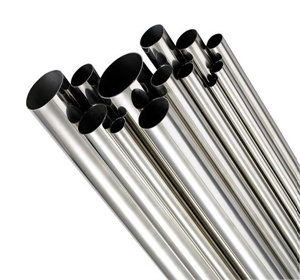Corrosion resistance of 304 stainless steel pipe: Average corrosion: 304 stainless steel pipe because of chromium content (22%), molybdenum (3%) and nitrogen content (0.18%), the corrosion resistance of 2205 is better than 316L and 317L in most environments. Local corrosion resistance of 316 stainless steel: The content of chromium, molybdenum and nitrogen in 304 stainless steel makes it have strong resistance to point erosion and crevice erosion in oxidizing and acidic solutions. Stress erosion resistance: The dual-phase microstructure of 304 stainless steel tube helps to improve the stress erosion cracking resistance of stainless steel. In the presence of certain temperature, stress, oxygen and chloride, austenitic stainless steel will undergo chloride stress intrusion. Because these conditions are not easy to control, the use of 304L, 316L and 317L is limited in this regard.

Anti-erosion fatigue: The high strength and corrosion resistance of 304 stainless steel make it have a high resistance to erosion and fatigue. Processing equipment is susceptible to aggressive environments and loading cycles, and the properties of 2205 are ideal for such applications. Annealing atmosphere. 316 welded pipes generally use pure hydrogen as the annealing atmosphere, and the purity of the atmosphere is preferably more than 99.99%. If another part of the atmosphere is an inert gas, the purity can also be lower, but it must not contain too much oxygen and water vapor. Whether the annealing temperature reaches the specified temperature. The heat treatment of 316 stainless steel pipe is generally solution heat treatment, which is commonly called “annealing”, and the temperature range is 1040~1120 ° C (Japanese standard). You can also observe through the observation hole of the annealing furnace. The stainless steel tube in the annealing area should be incandescent, but there is no softening and sagging.
